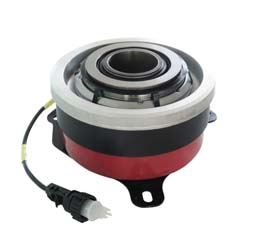
Hydraulic clutch actuators play a pivotal role in modern automotive and industrial applications, offering precise control over clutch engagement and disengagement. These actuators utilize hydraulic pressure to transfer force from the clutch pedal to the clutch mechanism, ensuring smooth gear changes and efficient power transmission.

Hydraulic clutch actuators consist of several key components:
Master Cylinder: Converts mechanical force from the clutch pedal into hydraulic pressure.
Slave Cylinder: Receives hydraulic pressure from the master cylinder and engages/disengages the clutch.
Fluid Reservoir: Stores hydraulic fluid, ensuring consistent pressure transmission.
Connecting Lines: Transport hydraulic fluid between the master and slave cylinders.
The operation begins when the clutch pedal is depressed, causing the master cylinder piston to push hydraulic fluid into the slave cylinder. This action moves the slave cylinder piston, which in turn activates the clutch mechanism. Proper adjustment of hydraulic fluid levels and regular maintenance are crucial for optimal performance.
Precision: Offers precise control over clutch engagement, reducing wear and tear.
Durability: Hydraulic systems are robust and reliable under varying operating conditions.
Smooth Operation: Ensures smoother gear shifts compared to mechanical linkage systems.
Adjustability: Allows for fine-tuning of clutch engagement points to suit driver preferences.
Despite their reliability, hydraulic clutch actuators may encounter issues such as:
Fluid Leakage: Check for leaks in the master and slave cylinders, and promptly replace worn seals.
Fluid Contamination: Ensure hydraulic fluid is clean and free from debris to prevent system failure.
Air in the System: Bleed the hydraulic system to remove air bubbles that can affect clutch operation.
Regular maintenance includes inspecting fluid levels, checking for leaks, and following manufacturer-recommended service intervals.
Hydraulic clutch actuators find widespread use in:
Automotive Industry: Used in passenger vehicles, trucks, and racing cars for efficient clutch control.
Industrial Machinery: Employed in heavy-duty equipment and agricultural machinery for reliable performance under load.
Advancements in hydraulic actuator technology focus on:
Electronic Control: Integration with electronic systems for adaptive clutch control.
Materials Innovation: Development of lightweight and durable materials to enhance performance and efficiency.
Energy Efficiency: Improving hydraulic systems to reduce energy consumption and environmental impact.
Hydraulic clutch actuators are essential components in modern mechanical systems, providing precise and reliable clutch control across various applications. Understanding their operation, maintenance requirements, and future trends is crucial for maximizing performance and longevity.
By adhering to recommended maintenance practices and staying updated on technological advancements, users can ensure optimal functionality of hydraulic clutch actuators in automotive and industrial settings.